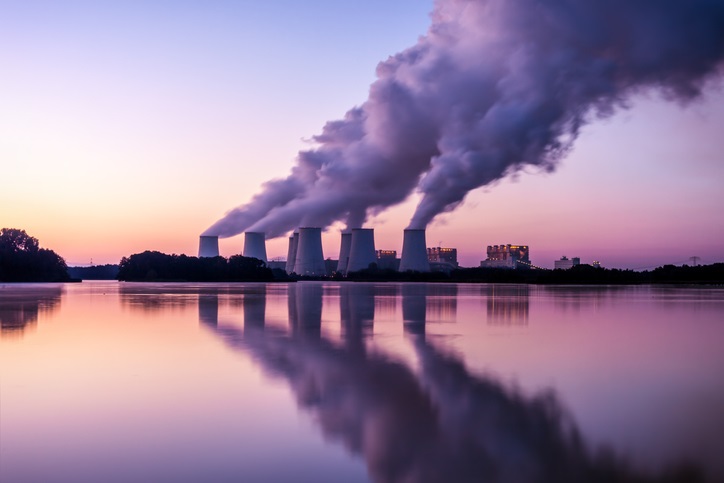New routes for ETF investors to add green to portfolios
Investors now have a chance to trade incentives designed to encourage firms to reduce their emissions.
19th November 2021 13:51
by Tom Bailey from interactive investor
Investors now have a chance to trade incentives designed to encourage firms to reduce their emissions.

Investors looking to add ethical, social and governance (ESG) style investing to their portfolio have plenty of choice these days. Most major indices now have an ESG-screened version that can be accessed cheaply through ETFs.
Meanwhile, there is no shortage of thematic funds, both ETFs and closed-end trusts, offering exposure to the transition towards more renewable energy.
- How ESG index funds and ETFs have fared since Paris Agreement
- ii COP26 hub: see tips, news, comment and analysis from our experts
- Tom Bailey: the two theories driving ethical ETF demand
However, investors now have another way to gain green exposure: carbon credits.
In 2005, the European Union created the EU Emissions Trading System, often called a “cap and trade system”. Under this system, industrial firms emitting greenhouse gases are required to hold enough carbon credits to cover their emissions.
These carbon credits are issued each year, with some going directly to firms for free and others being auctioned.
While the amount of credits issued each year is capped, firms with higher emissions are able to purchase credits on the market. This means that pollution has a “price” that firms must factor into their decision-making, creating an incentive to cut emissions.
However, the system also reduces the amount of new credits issued each year. As a result, credits become scarcer and therefore increase in price. The hope is that this will incentivise firms to reduce their emissions as the “price” of pollution increases.
Over the past three years, the price of credits has increased by 270%. This presents a potential opportunity for investors.
In August, WisdomTree re-introduced Europe’s first carbon exchange-traded ETF, WisdomTree Carbon ETC GBP (LSE:CARP). Listed on the London Stock Exchange, it tracks the Solactive Carbon Emission Allowances Rolling Futures index for a charge of 0.35%. This index allows investors to gain ICE Carbon Emission Allowances (EUA) futures contract.
The fund was initially launched in 2008 but was forced to close in June 2020 due to problems with its counterparty. The idea is to provide investors with an easy way to gain exposure to the price increase of carbon credits.
The relaunched ETF, however, now has a rival in the form of the recently listed SparkChange Physical Carbon EUA ETC (LSE:CO2). However, unlike the WisdomTree product, this ETC physically holds carbon credits rather than using futures.
- Want to invest ethically? ii’s ACE 40 list of ethical investments can help
- Get £100 cashback when you switch to an ii ISA in November. Terms apply
This has the potential benefit of avoiding the performance drag of contango and roll yield, according to SparkChange. However, it also means that it charges more, with an ongoing charge of 0.89%.
However, according to the ETF issuer, it has an added green benefit.
When the fund holds physical carbon credits, these are taken out of use and cannot be used by companies. If an investor buys into the ETF, the ETF will buy more credits to hold in the portfolio. If the credits are held by the ETF, a company cannot use it to gain the “right to pollute”. So an investor buying this product can feel they are directly reducing pollution.
There is also a secondary effect. Under EU law, withholding credits reduces the amount available next year, further reducing supply. In theory, the ETF reduces the amount of pollution that European firms can emit by making credits scarcer and more expensive. This, in theory, will speed up the continent’s transition to net zero.
Of course, how much of an actual impact this has will depend on the amount of money the ETF attracts. While it may drive up demand and increase the scarcity of carbon credits in theory, the actual amounts may be too small for the ETF to have a big effect alone.
However, others point to the potential problems the ETF could create for the European economy. If the ETF does become wildly popular (or other products copying its launch) and rapidly drives up the price of carbon, this could cause a shock to European industry which, for better or worse, still needs to be able to emit greenhouse gasses.
These articles are provided for information purposes only. Occasionally, an opinion about whether to buy or sell a specific investment may be provided by third parties. The content is not intended to be a personal recommendation to buy or sell any financial instrument or product, or to adopt any investment strategy as it is not provided based on an assessment of your investing knowledge and experience, your financial situation or your investment objectives. The value of your investments, and the income derived from them, may go down as well as up. You may not get back all the money that you invest. The investments referred to in this article may not be suitable for all investors, and if in doubt, an investor should seek advice from a qualified investment adviser.
Full performance can be found on the company or index summary page on the interactive investor website. Simply click on the company's or index name highlighted in the article.